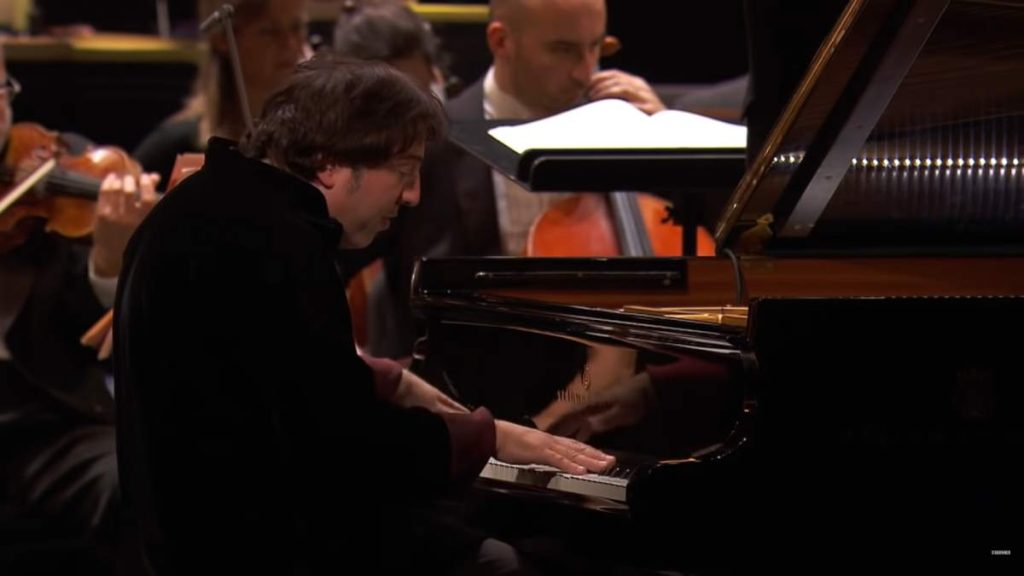Cello Paradiso, an ensemble comprised of four cellists from Istanbul performs the Turkish pianist and composer Fazıl Say‘s “Kumru Ballad”. Kumru means “collared dove” in Turkish.
Cello Paradiso: Şafak Erişkin, Didem Erken, Gülyar Balcı, and Dilbağ Tokay.
Cello Paradiso
Cello Paradiso, comprised of four cellists from İstanbul, aims to present a rich repertoire from the music of different geographies and periods to their audiences. What has made these four women meet at a junction is the magic of music which has blended with a variety of common interest areas from love of nature to love of animals, from literature to discovery of new places.
Hence, sharing a common spirit, enriched with social awareness and responsibility, they are determined to take a conscientious role in civic involvement projects as initiators or supporters. These four members of Cello Paradiso follow their careers, individually, as soloists and academicians and they want to share the wealth and joy that music, particularly the cello, has added to their lives with their audiences. This is their journey in life, which they think has meaning only with music and sharing.

Composer: Fazıl Say
Fazıl Say, born in 1970, comes from a family with diverse intellectual backgrounds. His father, Ahmet Say, is a well-known author and musicologist, while his mother, Gürgün Say, worked as a pharmacist. His namesake grandfather, Fazıl Say, was an active member of the Spartakusbund. Showing extraordinary talents early on, Say demonstrated a remarkable ability for arithmetic with four-digit numbers by the age of two.
His innate musical talent was discovered when his father noticed him playing the melody of “Daha Dün Annemizin” (Turkish adaptation of “Ah! vous dirai-je, maman”) on a makeshift flute without any formal training. This led to his father seeking guidance from Ali Kemal Kaya, an oboist and family friend. At just three years old, Say began learning piano under the guidance of Mithat Fenmen.
Say’s journey into composition started at fourteen, with his first piano sonata, composed while he was a student at the Ankara Conservatory. This early phase of his career saw the creation of several chamber works, including ‘Schwarze Hymnen’ for violin and piano and a guitar concerto, although these works were not assigned an opus number.

His official opus 1, designated later, was one of the pieces he played during the Young Concert Artists Auditions in New York, leading to his victory – the ‘Four Dances of Nasreddin Hodja’ (1990). This piece encapsulates the core elements of Say’s unique style: a rhapsodic, fantasia-like structure, variable rhythm with syncopated, dance-like elements, a continuous and vital pulse, and melodic ideas often rooted in Turkish and neighboring folk music.
In this regard, Say aligns with composers like Béla Bartók, George Enescu, and György Ligeti, who also incorporated their national musical folklore into their compositions. His international acclaim grew with the piano piece ‘Black Earth’, Op. 8 (1997), in which he used techniques popularized by John Cage for the prepared piano.
Say later shifted his focus to larger orchestral forms, drawing inspiration from poets like Nâzım Hikmet and Metin Altıok. His compositions, notably the oratorio ‘Nâzim’, Op. 9 (2001), often include elements of traditional Turkish music, such as kudüm and darbuka drums and the ney flute, creating a distinctive sound.
His ‘Violin Concerto 1001 Nights in the Harem’, Op. 25 (2007), inspired by the famous tales, especially resonated internationally. This piece, alongside others like the ‘Istanbul Symphony’, Op. 28 (2009), which premiered at the Konzerthaus Dortmund, reflects Say’s profound connection to his cultural roots. His other notable works include the ‘Divorce String Quartet’, Op. 29, the ‘Piano Concerto Nirvana Burning’, Op. 30, and a ‘Trumpet Concerto’ premiered by Gábor Boldoczki.
For clarinetist Sabine Meyer, Say composed the ‘Clarinet Concerto’, Op. 36 (2011), inspired by the life and work of Persian poet Omar Khayyam, and a ‘Sonata for Clarinet and Piano’, Op. 42 (2012). Fazıl Say’s compositions are globally published by the renowned music publisher Schott Music of Mainz.
Sources
- Fazıl Say on Wikipedia